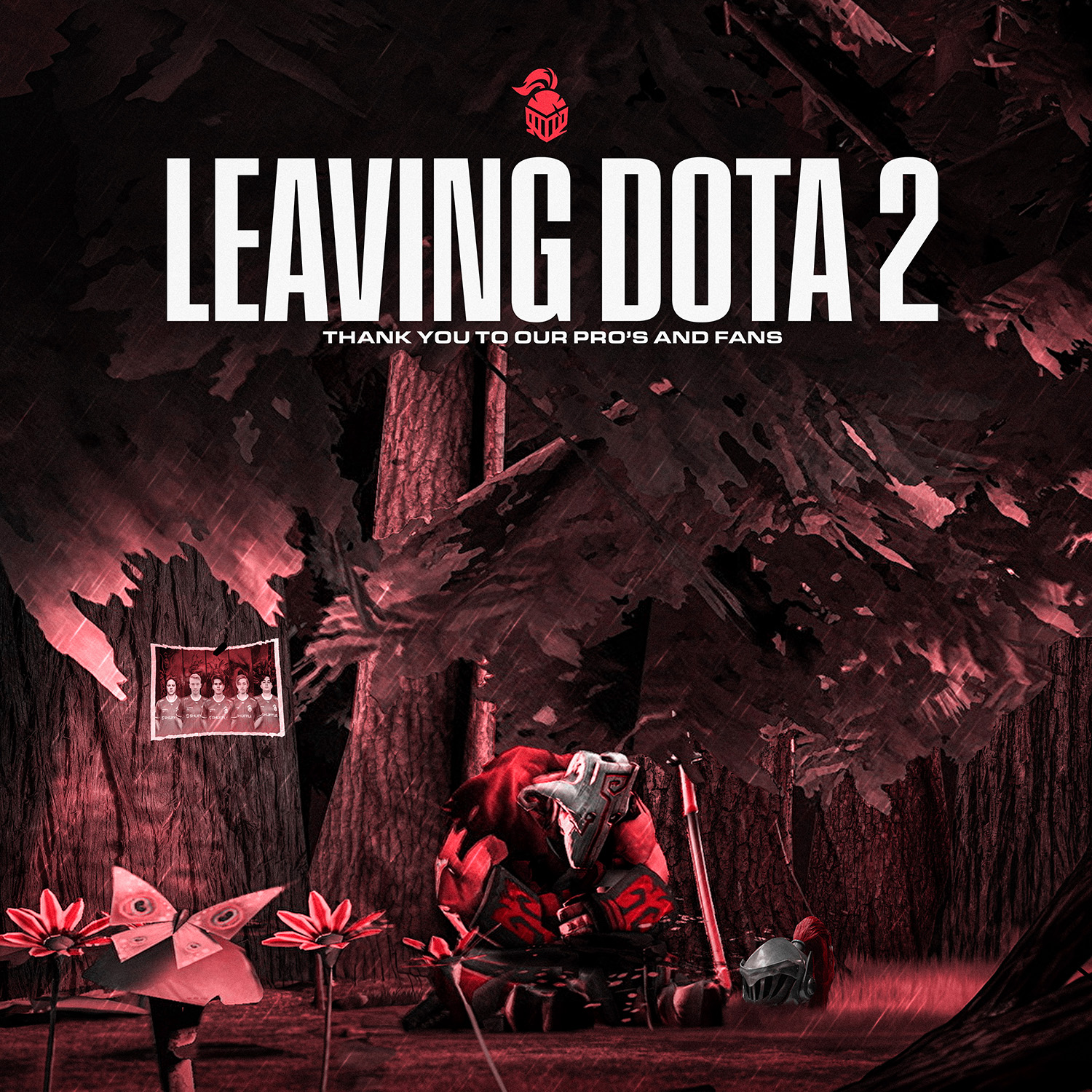With the end of the most recent DPC season, we say goodbye to our Dota roster. We’d like to thank them all for theirefforts throughout the season, and most particularly Xibbe and Supreme – the staples of our various Dota roster iterations.
As this roster is released, we are also ceasing operations in EU Dota for the foreseeable future. We no longer see aviable way forward without a sizeable investment rife with risk.
A statement from our CEO:
“Dota was the first game we entered, and indeed was the entire reason for ITB’s creation. I’ve played Dota for many,many years, peaked as a 5k shitter, and then was forced out due to wrist issues. Those same wrist issues compelled me to move to a managerial role and live vicariously through better players, offering to develop them professionally and use my commercial experience to find sponsors.
Without Dota, ITB would literally not exist.
However, the following factors with the scene led me to this decision, which may (or may not) be of interest to Dota viewers/players:
1) Completion of the DPC: In the announcement that 2023 is the final year, it’s odd to me that Valve didn’t highlight an original intention of the Dota Pro Circuit – offering stability to the tier 2 and beyond the scene, while also enabling security for sponsor interactions for qualified teams. With the DPC, there was a clear format and analyzed viewership that could be presented to partners for activations. With the removal of the DPC, this goes away. That said, I understand Valve’sreasoning for this – but with the DPC gone, it leaves even less reason to operate a team in tier 2/3 – especially in Europe.
2) Lack of new talent within the EU region: When we were promoted to Division 1 and had our subsequent TI qualification run, narrowly missing out on this vs Secret, we had found and nurtured players like Ari, Kidaro, and Otaker – new players with promising potential and bolstered by veterans like Xibbe and Supream^. After our run, Ari was poached, Kidaro lost and the subsequent roster did not work the same. Unlike CS:GO, there just isn’t an array of talent that you can truly dig deepin, scout, and bring into a tier 3, 2, or even 1 level sustainably. There is the vanguard of old players but also new prospects breaking into the scene almost daily. This rarely happens in EU Dota, and it means extreme difficulty for the lower tiers to find viable talent without breaking your bank account or recycling through top 200 players on the leaderboard. What talent there is naturally is eaten up by the top teams.
3) Fan engagement and monetization: It’s no secret that esports companies collectively are struggling to diversify revenue, decrease costs, and increase income. In truth, a primary way all esports companies want to savvy is how to better monetize fans and esports engagers alike, whether you spend several hours or one or two per week either watching or gaming. �?We’ want to optimize turning you, a viewer and gamer, into revenue. Dota enabled this to a degree with the fan-bundle kit, but then shortly after killed all potential for creativity by limiting it to �?fan/brand’ specifics that align with the players/and or brand. We’ve also found it very difficult to build a fan-base across Dota, with limited traction and engagement across social posts. To build fans you need to win, excite, or bring in players who have an existing fan-base. The first we couldn’t do consistently, the second we weren’t able to maintain, and the third was too expensive. Realistically you need all three to have any possibility of strong fan-engagement across Dota(see OG, Secret), while in other genres there is more versatility and options(see teams like SAW in CS:GO, Sinners in Trackmania, and MNM in R6S).
4) Go big or go home: Dota’s EU ecosystem(in part because everything already mentioned) requires spending large sums to reach any viable placement for social engagement or tournament success. Entity did this, Tundra also, and with large success – however it still has inherent risks (though this is indeed true of every esport, it is more prolific in Dota), and while we could spend 200k on a top team after TI, it is better spent elsewhere. We can ensure a return on investment in other titles or markets, but this is not the case in Dota. We may be back and do enjoy contributing to the below tier 1-2 ecosystem – but it is unfortunately not our time. Either way, we’ll always be keeping tabs and hope to be back soon and are also open to the possibility of remaining in Dota within a different geography”.
With that, it’s goodbye Dota (for now).
Thank you to everyone and anyone who supported us throughout.
ITB


 (1).png)

.webp)


